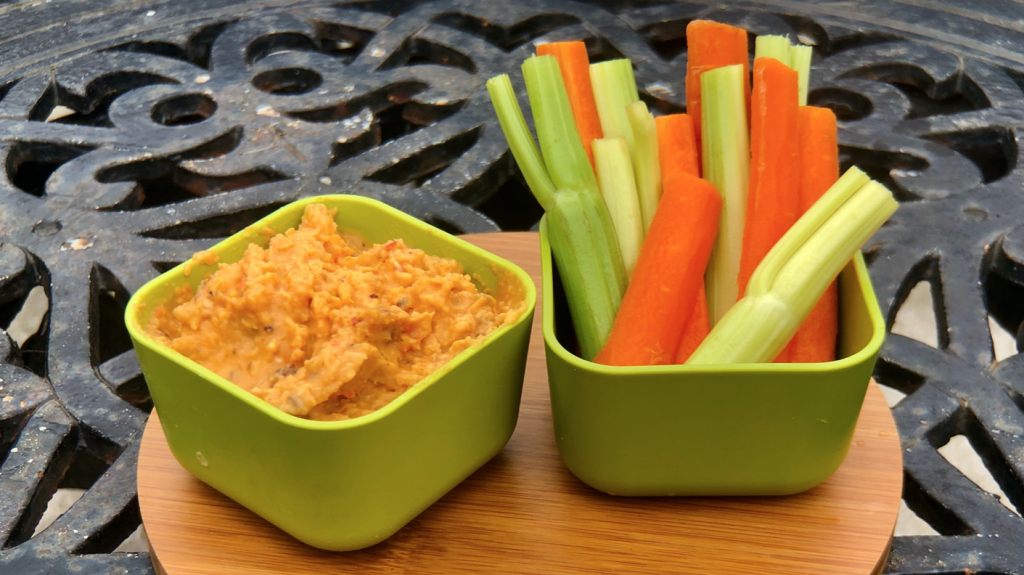
I’ve been doing more cooking than usual during the lockdown, and I’ve gradually refined this recipe that I like for spicy hummus.
I’m including here the ingredients that I use for:
(a) a smaller batch of hummus, that ends up filling a 650ml plastic container, which I would make to eat without freezing, and
(b) a larger batch of one blender full of hummus, or three 650ml plastic containers, some of which I would store in the freezer.
(I use a Blendtec blender with a Wildside jug, so for me one blender full means about two litres.)
The pictures below are from a mega-batch that I made of four blenders full, that fills twelve plastic containers, but you probably won’t want to do that unless you are as boring as I am.
Preparation 1 – Boil and Strain the Chickpeas
I soak the dried chickpeas overnight, strain them, cover them with water, bring them to the boil, simmer them for an hour, strain them, and keep some of the strained boiled water aside.
(a) For the smaller batch recipe, I use 200g of dried chickpeas, which becomes about 400g of chickpeas when cooked.
(b) For the larger batch recipe, I use 500g of dried chickpeas, which becomes about 1kg of chickpeas when cooked.
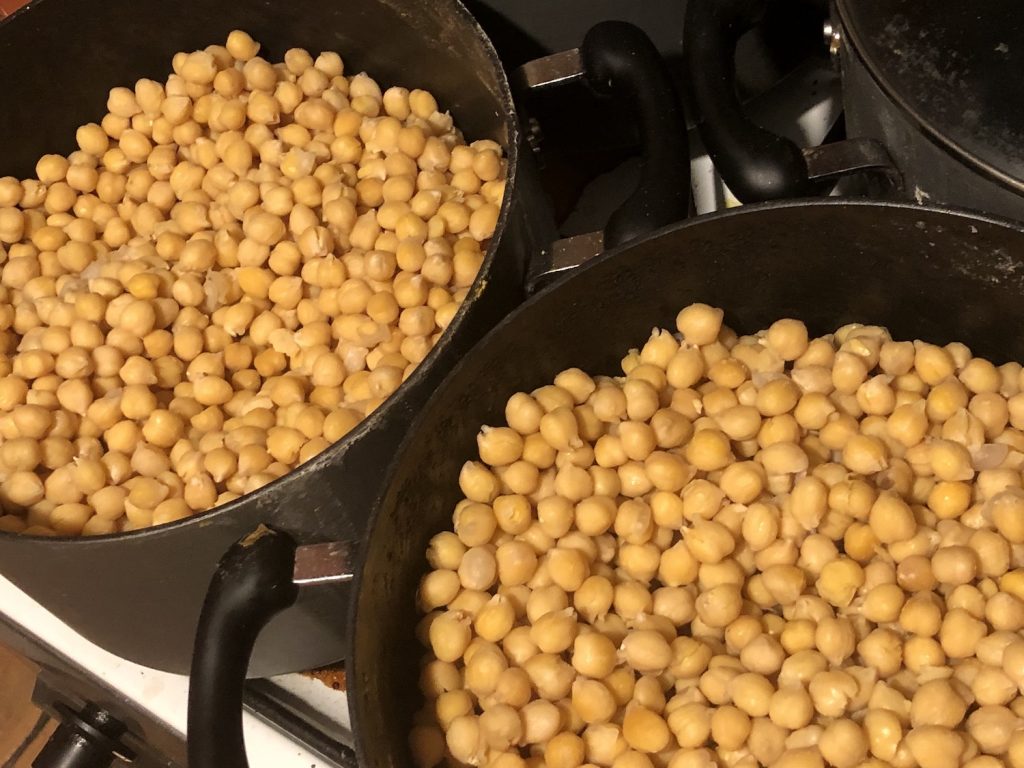
Preparation 2 – Mix the Red Pepper and Juices
While the chickpeas are cooking, I chop and roast some fresh red pepper, then chop it into smaller chunks and put it into a plastic container, along with the juices.
(a) For the smaller batch recipe, a container will have
- Half a roasted and chopped fresh red pepper
- 4 tablespoons of Tahini (or more if you prefer it creamier)
- 1/3 cup virgin olive oil
- Juice from 1 lemon
- Salt and pepper
(b) For the larger batch recipe, a container will have
- A full roasted and chopped fresh red pepper
- 12 tablespoons of Tahini (or more if you prefer it creamier)
- 1 cup virgin olive oil
- Juice from 3 lemons
- Salt and pepper
The mix for the larger batch recipe would look like one of the four containers pictured below.
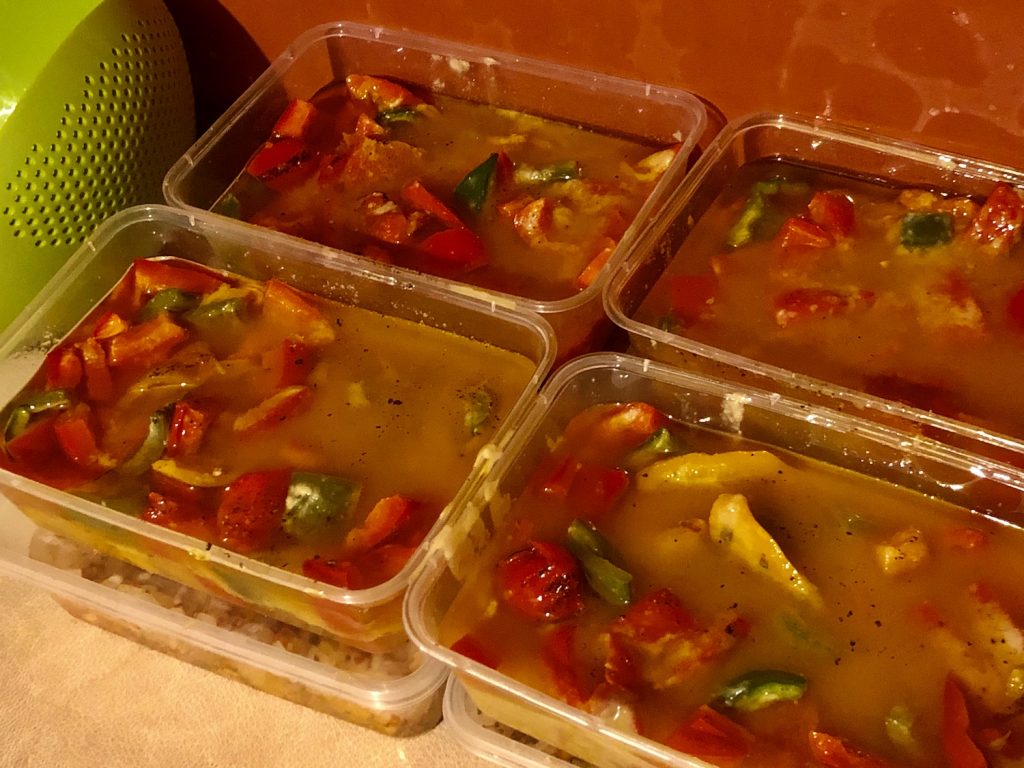
Preparation 3 – Mix the Spices and Onion for Cooking
I mix the spices and onion in a separate container. I will cook them before adding them to the blend.
(a) For the smaller batch recipe, a container will have
- 3 or 4 finely chopped cloves of garlic
- 1 finely chopped red chilli
- 1 teaspoon of cumin
- 1 teaspoon of paprika
- 1 teaspoon of coriander seeds
- 1 teaspoon of black mustard seeds
- 1/3 of a finely chopped large onion
(b) For the larger batch recipe, a container will have
- 1 finely chopped bulb of garlic (bulb, not clove)
- 3 finely chopped red chillis
- 3 teaspoons of cumin
- 3 teaspoons of paprika
- 3 teaspoons of coriander seeds
- 3 teaspoons of black mustard seeds
- One finely chopped large onion
The mix for the larger batch would look like one of the four containers pictured below.
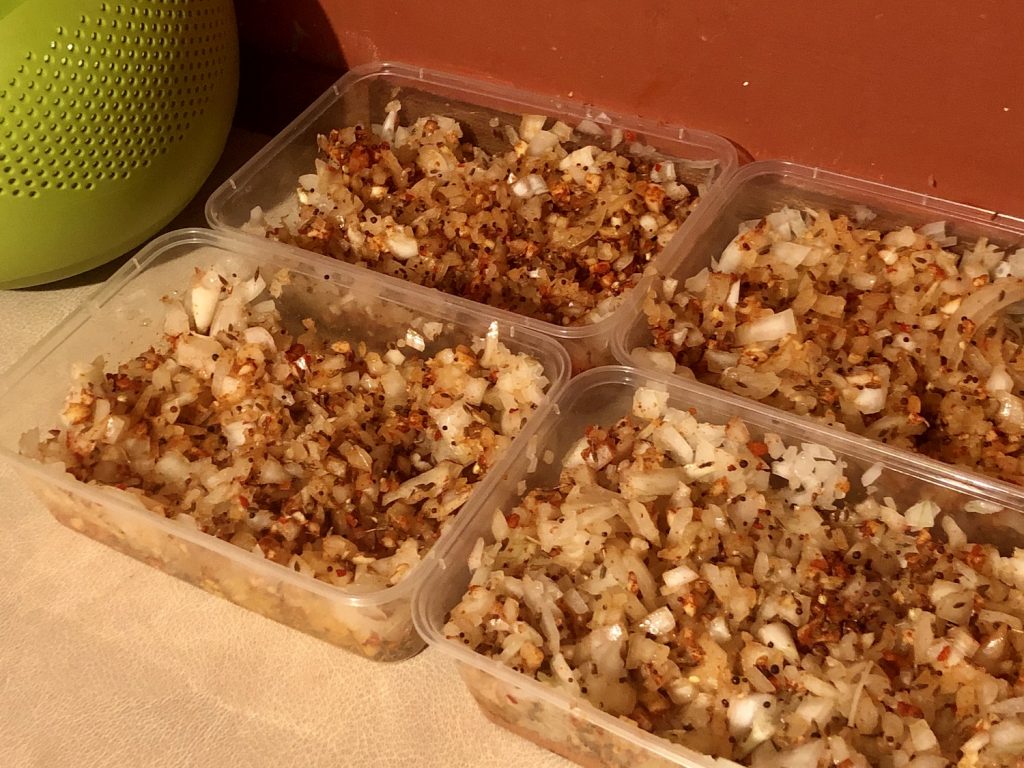
Stage 4 – My Sequence of Blending
I blend the hummus using the pulse button so that I can keep an eye on the consistency and adjust ingredients if I need to.
- I start by cooking the spices and onion in a pan with some olive oil.
- While they are cooking, I gradually put half of the chickpeas in the blender and blend them using the pulse button. I scrape them down from the sides and stir them between each pulse.
- I add the roasted peppers and juices into the blender. Stir them in with the chickpeas and blend again using pulse. Meanwhile, check and turn the spices as they are cooking.
- I add the other half of the chickpeas and some of the strained water from the boiled chickpeas (1/3 cup for the smaller batch, 1 cup for the larger batch). Stir it all in and blend again using pulse.
- I add the (now-cooked) spices and onions. Stir it all in and blend again using pulse. I gradually add more of the strained water from the boiled chickpeas if I think it needs it.
Stage 5 – Spicy Hummus!
(a) The smaller batch ends up filling one of the 650ml plastic containers pictured below, which I would make to eat without freezing, and
(b) The larger batch ends up filling three of the 650ml plastic containers pictured below, some of which I would freeze for later.
In these airtight containers they last in the fridge for a few days, and in the freezer for a few months. I switch them from the freezer to the fridge about a day before I start to eat them. After they have thawed to fridge temperature, I stir them to recover the consistency.
The mega-batch pictured below is four blenders full, which ends up in twelve 650ml plastic containers.
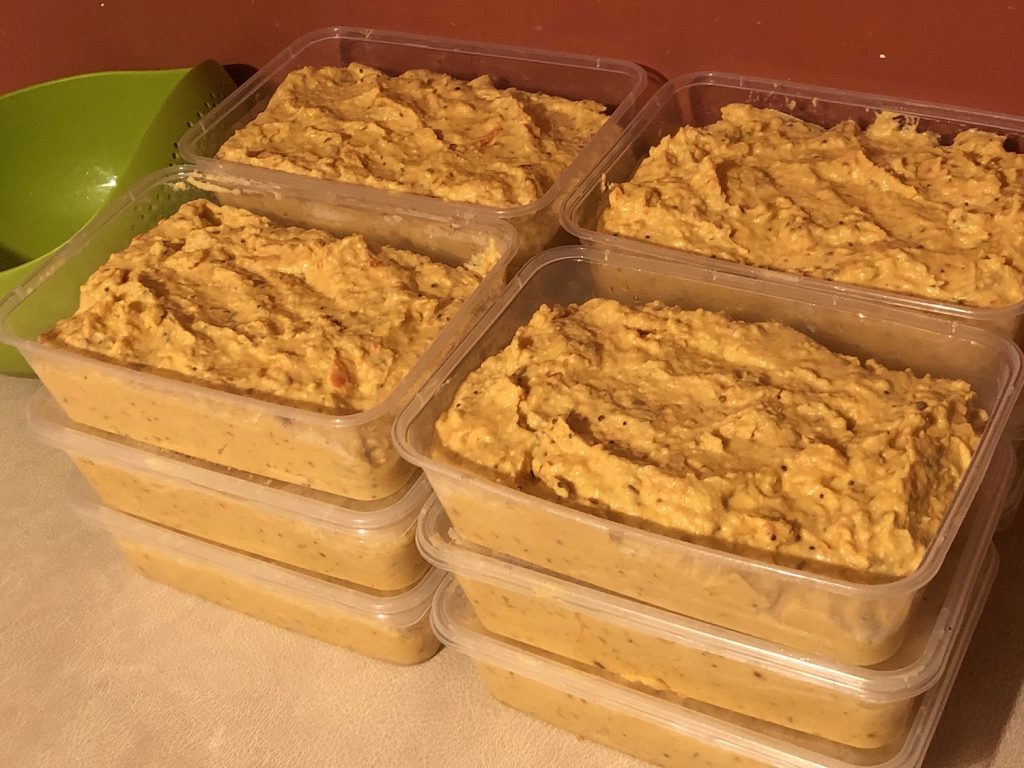
When you soak the chickpeas, add a tablespoon of baking soda. That will remove some of the skins and make it easier to skin after cooking. Which helps oh so much with the , um, windy after effects.
Also, genera rule of thumb is 1 part tehini for 2 parts hummus, you get that authentic middle eastern creamy feel.
Thanks, Noam. I’ll try that next time. I haven’t been skinning the chickpeas.
I add a couple of ice cubes while blending (from Yasmin Khan recipe) . It really helps the creaminess. I will try this hummus. Looks great.